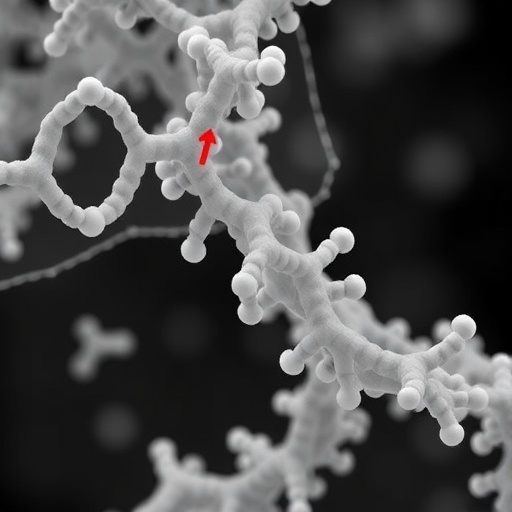In the relentless pursuit of biomarkers to reliably diagnose and track neurodegenerative disorders, Parkinson’s disease and related synucleinopathies have posed a particularly stubborn challenge. The accumulation and pathological modification of α-synuclein protein in the brain is a hallmark of these disorders, but translating this central neuropathology into peripheral biomarkers accessible through cerebrospinal fluid (CSF) or blood has proven elusive. A recent study published in npj Parkinson’s Disease by Bellomo, Stoops, Vanbrabant, and colleagues delivers critical insights that may reshape current biomarker paradigms regarding phosphorylated α-synuclein (p-α-syn) in CSF and plasma. This landmark investigation rigorously interrogates whether the phosphorylated form of α-synuclein, often considered a pathological signature within affected brain regions, is faithfully reflected in CSF or plasma compartments and hence useful for clinical and research applications.
Clinicians and scientists have long sought molecular correlates in body fluids that mirror the complex neurodegenerative changes occurring within the aging brain of Parkinson’s disease patients. α-synuclein, a presynaptic protein that is ubiquitously expressed in neurons, gains pathological significance when it misfolds and aggregates, especially when phosphorylated at serine 129. This phosphorylation event is heavily implicated in the formation of Lewy bodies and neurites, the neuropathological hallmarks of Parkinson’s and related disorders. The notion that phosphorylated α-synuclein levels in CSF or plasma might serve as a direct window into synucleinopathy has inspired numerous efforts to quantify these species with the hope of noninvasive diagnostics or disease monitoring.
Bellomo et al.’s study represents a critical advance by systematically comparing phosphorylated α-synuclein levels in CSF and plasma samples from a well-characterized cohort of subjects with synucleinopathies, including Parkinson’s disease and dementia with Lewy bodies, alongside controls without synucleinopathy. Using state-of-the-art immunoassays fine-tuned to detect pathological p-α-syn, the researchers meticulously measured protein concentrations to determine whether they correlated with clinical diagnosis, neuropathology, or disease severity. Their findings, however, challenge the prevailing assumption that this phosphorylated species in peripheral compartments faithfully recapitulates brain pathology.
.adsslot_o91GaK4FVj{ width:728px !important; height:90px !important; }
@media (max-width:1199px) { .adsslot_o91GaK4FVj{ width:468px !important; height:60px !important; } }
@media (max-width:767px) { .adsslot_o91GaK4FVj{ width:320px !important; height:50px !important; } }
ADVERTISEMENT
Contrary to expectations, phosphorylated α-synuclein levels in CSF and plasma were found to be indistinguishable between patients with confirmed synucleinopathies and control subjects. This lack of difference signals a fundamental disconnect between the central neuropathological burden and peripheral fluid levels of p-α-syn. Despite the protein’s pivotal role in brain pathology, its phosphorylated form does not translate into a reliable biomarker detectable in CSF or blood plasma, at least when measured by current immunoassay techniques. The implications ripple across the field, suggesting that researchers and clinicians need to reconsider the utility and interpretation of p-α-syn as a fluid-based biomarker.
The study’s rigorous methodology lends strong credence to these conclusions. The authors employed highly specific monoclonal antibodies targeting phosphorylated serine 129 on α-synuclein and used sophisticated platforms designed to minimize nonspecific binding and cross-reactivity, ensuring that detected signal truly reflected the pathological protein form of interest. Moreover, extensive controls and replicate measurements reinforced the robustness of their data. Notably, the patient cohorts were carefully phenotyped with neuropathological confirmation where possible, adding further weight to the relevance of the findings. The study’s statistical analyses accounted for confounders such as age, disease duration, and comorbidities, rendering the negative findings even more striking.
These revelations raise crucial questions about the pathobiological mechanisms that govern protein processing and clearance in neurodegeneration. Why does phosphorylated α-synuclein remain a brain-restricted phenomenon without meaningful spillover into CSF or plasma? It appears that the blood-brain barrier and proteostatic mechanisms may limit the release or persistence of pathological phosphorylated α-synuclein forms beyond the brain parenchyma. Alternatively, phosphorylated α-synuclein might be rapidly degraded or cleared in peripheral compartments, obscuring detectable accumulation. This disconnect underscores the intricate biology of protein trafficking and stresses that the mere presence of a pathological protein in the brain does not guarantee its detectability in peripheral fluids.
The findings align with other emerging evidence suggesting that total α-synuclein and its various post-translationally modified forms in CSF and plasma have limited diagnostic value. Previous conflicting reports highlighting elevated or decreased p-α-syn levels in patient biofluids may reflect technical variability, sample heterogeneity, or confounders rather than robust biological signals. Bellomo and colleagues’ rigorously controlled approach therefore sets a new benchmark for biomarker validation, emphasizing the need for stringent assay standardization and the inclusion of carefully characterized patient populations.
Beyond diagnostic implications, the study prompts a reevaluation of therapeutic monitoring strategies utilizing phosphorylated α-synuclein levels as surrogate readouts. If peripheral fluids do not reliably reflect brain pathology, then efforts to track treatment efficacy through these biomarkers must be reconsidered. Emerging alpha-synuclein targeting therapies will require alternative biomarker endpoints, potentially relying more heavily on imaging, novel assay technologies, or direct neuropathological assessment when feasible.
Despite the negative results concerning p-α-syn as a fluid biomarker, this study is far from discouraging. Instead, it redirects the focus of Parkinson’s disease biomarker research toward more nuanced approaches that acknowledge the multifaceted biology of neurodegeneration. Efforts may pivot to exploring other molecular species such as oligomeric α-synuclein, truncated fragments, or non-proteinaceous markers including lipid metabolites and neuroinflammatory mediators. Multi-modal biomarker panels incorporating imaging and genetic data may also yield more sensitive and specific diagnostic tools.
The study’s insights into the biology of α-synuclein post-translational modification further enhance our understanding of disease mechanisms. Phosphorylation at serine 129 remains a hallmark of pathology within brain tissue, but its compartmental limitations highlight the spatial complexity of neurodegenerative proteinopathy. Future investigations will need to elucidate the cellular mechanisms preventing phosphorylated α-synuclein release, including intracellular aggregation dynamics, exosomal secretion pathways, and proteolytic degradation systems.
Ultimately, the work by Bellomo et al. represents a critical milestone in Parkinson’s research and neurodegenerative biomarker science. It serves as a reminder that a promising biomarker must overcome the formidable challenges posed by biological barriers and complex protein homeostasis before clinical translation. The rigorous dismissal of phosphorylated α-synuclein in CSF and plasma as a faithful marker of synucleinopathy will refocus scientific efforts on conceiving new biomarker strategies grounded in robust biology and technical precision. As the field advances, integrating these lessons will be key to overcoming the bottleneck of diagnosis and monitoring in Parkinson’s disease and ultimately improving patient care.
In conclusion, the quest for accessible and reliable biomarkers defining the synucleinopathies remains ongoing. The promising candidate that phosphorylated α-synuclein could serve as a peripheral signpost to central pathology has been thoughtfully and conclusively challenged. Bellomo and colleagues’ work underscores the critical importance of truth-telling negative findings and the demanding standards required to validate clinical biomarkers. While phosphorylated α-synuclein levels in CSF and plasma may not reflect synucleinopathy, this does not diminish the value of continued innovation in biomarker discovery—potentially paving the way for breakthroughs that will one day enable early diagnosis, monitor disease progression, and evaluate therapeutic response with unprecedented fidelity.
Subject of Research: Biomarker evaluation of phosphorylated α-synuclein in cerebrospinal fluid and plasma in synucleinopathies such as Parkinson’s disease.
Article Title: Phosphorylated α-synuclein in CSF and plasma does not reflect synucleinopathy.
Article References:
Bellomo, G., Stoops, E., Vanbrabant, J. et al. Phosphorylated α-synuclein in CSF and plasma does not reflect synucleinopathy. npj Parkinsons Dis. 11, 232 (2025). https://doi.org/10.1038/s41531-025-01086-w
Image Credits: AI Generated
Tags: biomarkers for Parkinson’s diseasecerebrospinal fluid and blood biomarkersclinical implications of α-synuclein phosphorylationinsights from npj Parkinson’s Disease studyLewy bodies and neurites pathologyneurodegeneration and α-synucleinperipheral biomarkers for synucleinopathiesphosphorylated alpha-synuclein in neurodegenerative diseasesresearch on neurodegenerative disorder biomarkerssynucleinopathy diagnostic challengesα-synuclein misfolding and aggregation






